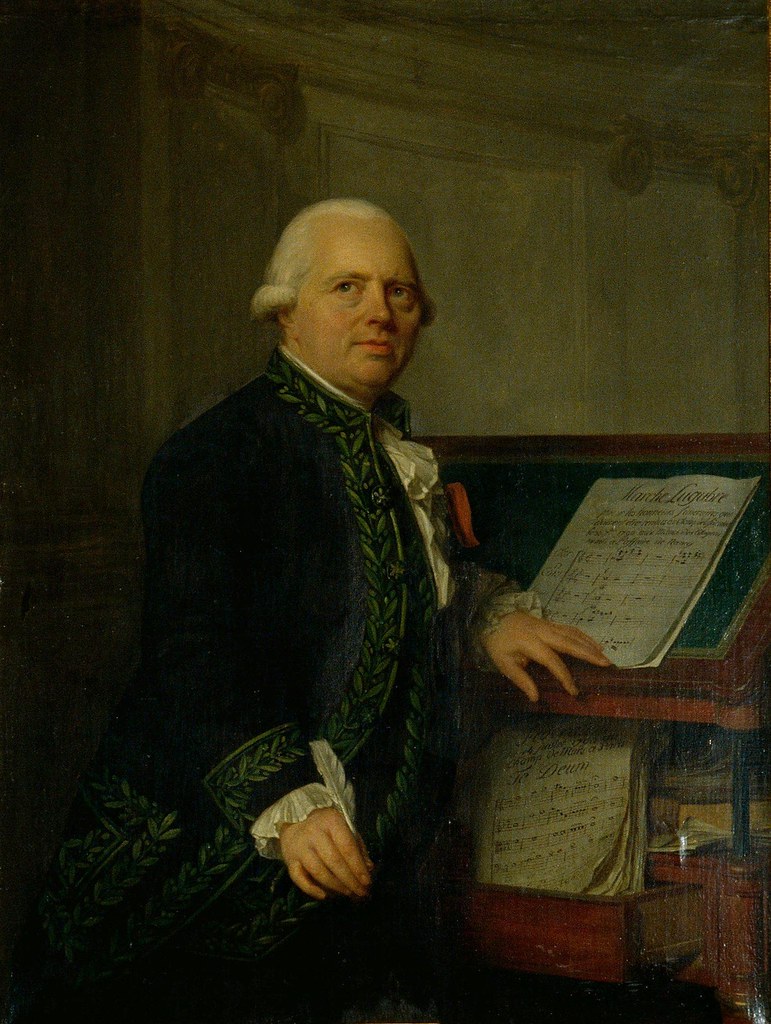François-Joseph Gossec (1734-1829)
- Symphonie (V) En Sol Mineur, Oeuvre VI (1763)
Performers: Orchestre Symphonique de Liège; Jacques Houtmann (conductor)
---
French-Belgian composer. He was born into a Walloon family whose name
was variously spelt Gaussé, Gossé, Gossée, Gossei, Gossey or Gossez. In
early childhood he displayed remarkable musical talent and reputedly
possessed a beautiful voice. From the age of six he sang at the
collegiate church of Walcourt. Shortly thereafter he was listed as a
singer in the chapel of Ste Aldegonde in Mauberge; while there he joined
the chapel of St Pierre and received instruction in the violin,
harpsichord, harmony and composition from its music director, Jean
Vanderbelen. In 1742 he became a chorister at Antwerp Cathedral, where
he pursued further studies with André-Joseph Blavier (1713-1782). In
1751 he moved to Paris, where he became a pupil of Jean- Philippe
Rameau. He succeeded Rameau as the conductor of the orchestra of tax
official Le Riche de la Poupelinière before accepting an appointment
with the Prince de Condé. On 11 October 1759 Gossec married
Marie-Elizabeth Georges. Their only child, Alexandre François-Joseph,
was baptized on 29 December 1760. In 1760 he produced a Requiem that
gained him overnight fame for its “terrifying” music. His fame as a
symphonist and composer of opera in Paris was matched by his activity as
a musical entrepreneur. In 1769 he founded the Concerts des amateurs,
in 1773 he helped to reorganize the Concerts spirituels, and in 1784 he
instructed at the École de chant. Together with Méhul and Catel, Gossec
was at the forefront of musical activities during the Revolutionary
period. He resigned from his duties at the Opéra in 1789 and directed
the Corps de Musique de la Garde Nationale with Bernard Sarette.
With the ascension of Napoleon and the Consulate in 1799 Gossec’s career
as a composer effectively ended: he wrote only two more significant
works, a Symphonie à 17 parties (1809) featuring a minuet in the form of
a fugue, and the Dernière messe des vivants (1813). He devoted his
energies to teaching, having been named inspector of teaching (with
Cherubini, Le Sueur and Méhul) and professor of composition at the
Conservatoire on its creation in 1795. He held the Conservatoire post
until the day Louis XVIII dissolved the Conservatoire in 1816. His final
years were spent in the Paris suburb of Passy. Gossec was one of the
most prolific composers in France during the 18th century. His career
reflects the changing social position of the Parisian musician between
the mid-18th century and the early 19th. He began as a court composer
writing symphonies and chamber music and moved on to conducting
independently and directing subscription concerts as well as working for
the Parisian public opera houses; he also published some of his own
works. He became the foremost musical representative of the French
Revolution, and might have secured his influence as an inspector and
professor of composition at the Conservatoire but for the political
turmoil in the wake of changing governments which finally ended his
career. He was a prolific composer, writing 48 symphonies, six sinfonia
concertantes, 22 operas, four ballets, 12 trio sonatas, six string
quartets and six flute quartets, three Te Deums (including a massive
multimovement work from 1817), two oratorios, the aforementioned
Requiem, three Masses, numerous smaller sacred works, a wind symphony,
and dozens of Revolutionary hymns, dirges, marches and cantatas.

Cap comentari:
Publica un comentari a l'entrada